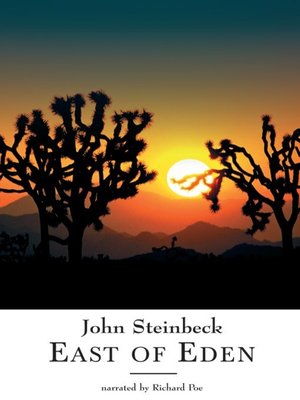

Samuel Hamilton and his wife, Liza, emigrate from Ireland to the Salinas Valley and settle there before the Trask family. In addition, to contrast class and other differences, it follows the history of another family that settles in the area, the Hamiltons. This study guide quotes and obscures the author’s use of the n-word.Įast of Eden is set primarily in California’s Salinas Valley and focuses on two pairs of brothers in two generations of the Trask family. Among the adaptations, Elia Kazan’s 1955 film, starring James Dean, holds prominence even though it covers only Part 4 of the novel. Additionally, the narrator switches to a third-person limited viewpoint when the plot centers on the story’s antagonist, implying an inaccessibility that is crucial to her character arc.Įast of Eden has been adapted for both stage and screen. This narrator-who arguably represents Steinbeck himself-has his own sections in which he adopts the first-person narrative point of view to assert philosophies or provide historical context this first-person viewpoint is often self-contradictory, allowing Steinbeck to challenge his own notions. Most of the novel uses a third-person omniscient narrator. Given the novel’s length (nearly 600 pages), these divisions help organize the family stories, historical contexts, and philosophical musings. Structurally, the novel has four parts, and each chapter contains different sections. In addition, Steinbeck explores various philosophies through his narrator and one of the main characters. An ode to the Salinas Valley, the novel is primarily a bildungsroman in which the protagonist’s coming of age resolves in major character development, and elements of biblical allegory and subversion play important roles.

A multigenerational saga, it focuses on one family but includes extended secondary families to enrich human dynamics. It’s a story about California life, about the essence of being human, about religion, and about family. East of Eden explores concepts central to the ethos of the US: determinism, free will, family, individual identity, the value of hard work, and the battle between humans and rustic terrain.


 0 kommentar(er)
0 kommentar(er)
